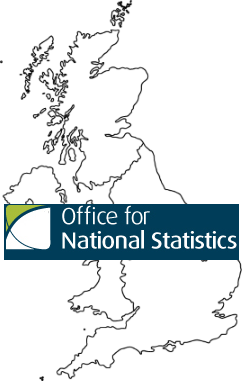Net migration to the UK in the year ending September 2015 stood at 323,000, a minor and statistically insignificant decrease compared to the year ending June, the Office for National Statistics (ONS) reported last week.
 You can read the ONS's Migration Statistics Quarterly Report: February 2016 here.
You can read the ONS's Migration Statistics Quarterly Report: February 2016 here.
The Financial Times noted that it was the first fall in net migration since the second quarter of 2013.
According to BBC News, David Cameron said the figure was "still too high" and the government was taking action "across the board" to bring immigration down, adding that it was important to "fix the issue of welfare" and his deal to limit in-work benefits for new EU migrants ahead of June's referendum would "have an impact".
The main points from the ONS quarterly report were as follows:
• Net long-term international migration = +323,000 (up 31,000 from YE September 2014).
• Immigration = 617,000 (up 2,000 from YE September 2014).
• Emigration = 294,000 (down 29,000 from YE September 2014).
• The latest increase in net migration was not statistically significant compared with YE September 2014. This net increase was the result of a decrease (not statistically significant) in emigration from 323,000 in YE September 2014 and immigration being at a similar level to the previous year.
• Net migration in YE September 2015 was 13,000 lower (not statistically significant) than the peak level of 336,000 published for YE June 2015.
• Net migration of EU citizens was estimated to be 172,000 (compared with 158,000 in YE September 2014; change not statistically significant). Non-EU net migration (191,000) was similar to the previous year (188,000).
• The estimate of immigration for EU citizens was 257,000, compared with 246,000 in YE September 2014. Whilst this was not statistically significant, there was a statistically significant increase in immigration of EU2 citizens to 55,000 in YE September 2015 (up 15,000). Conversely, immigration of non-EU citizens saw a decrease from 289,000 to 273,000 (not statistically significant).
• Of the 290,000 people who immigrated for work in YE September 2015 (up 25,000; not statistically significant), 59% (170,000) had a definite job to go to. 165,000 EU citizens came to the UK for work-related reasons. Of these, 96,000 (58%) came for a definite job and 69,000 (42%) came looking for work.
• Of all EU2 citizens who came to the UK in YE September 2015, 45,000 (87%) came for work-related reasons, a statistically significant increase of 18,000 from YE September 2014. Around two-thirds (28,000) arrived with a definite job to go to, a statistically significant increase of 17,000 from YE September 2014.
• Latest employment statistics from the Labour Force Survey show estimated employment of EU nationals (excluding British) living in the UK was 2.0 million in October to December 2015, 215,000 higher than the same quarter last year. Non-EU nationals in employment increased by 38,000 to 1.2 million and the total number of British nationals in employment increased by 278,000 to 28.3 million. Therefore, nearly half of the growth in employment over the last year was accounted for by foreign nationals. (These growth figures represent the NET change in the number of people in employment, not the proportion of new jobs that have been filled by non-UK workers.)
• In 2015, visas granted (non-EU, main applicants) for skilled work rose 1,920 (+4%) to 54,383, accounting for most of the 2,576 (+2%) increase in total work visas granted (to 122,426).
• There were 828,000 National Insurance Number (NINo) registrations to adult overseas nationals in 2015, an increase of 60,000 (8%) on the previous year.
• Long-term immigration for study was estimated to be 174,000 in YE September 2015, compared with 190,000 in YE September 2014 (not statistically significant). Over the same period, the total number of applications for a visa to study (excluding short-term students) fell by 5% to 239,564 and non-EU applications to study at a UK university (main applicants) fell by 2% to 168,221.
• There were 38,878 asylum applications (including dependants) in 2015, an increase of 20% compared with the previous year (32,344). This is the fifth successive year in which asylum applications have risen, although the number of applications is low relative to the peak in 2002 (103,081).
• The largest number of applications for asylum, including dependants, came from nationals of Eritrea (3,756; +465), followed by Iran (3,694; +1,195), Pakistan (3,254; -722), Sudan (3,014; +1,399) and Syria (2,846; +493). There were an additional 1,194 Syrian nationals granted humanitarian protection under the Syrian Vulnerable Persons Resettlement Scheme.
• Grant rates vary between nationalities; for example, 86% of the total initial decisions made for those giving Syrian as their nationality were grants of asylum or another form of protection, compared with 20% for Pakistani nationals.